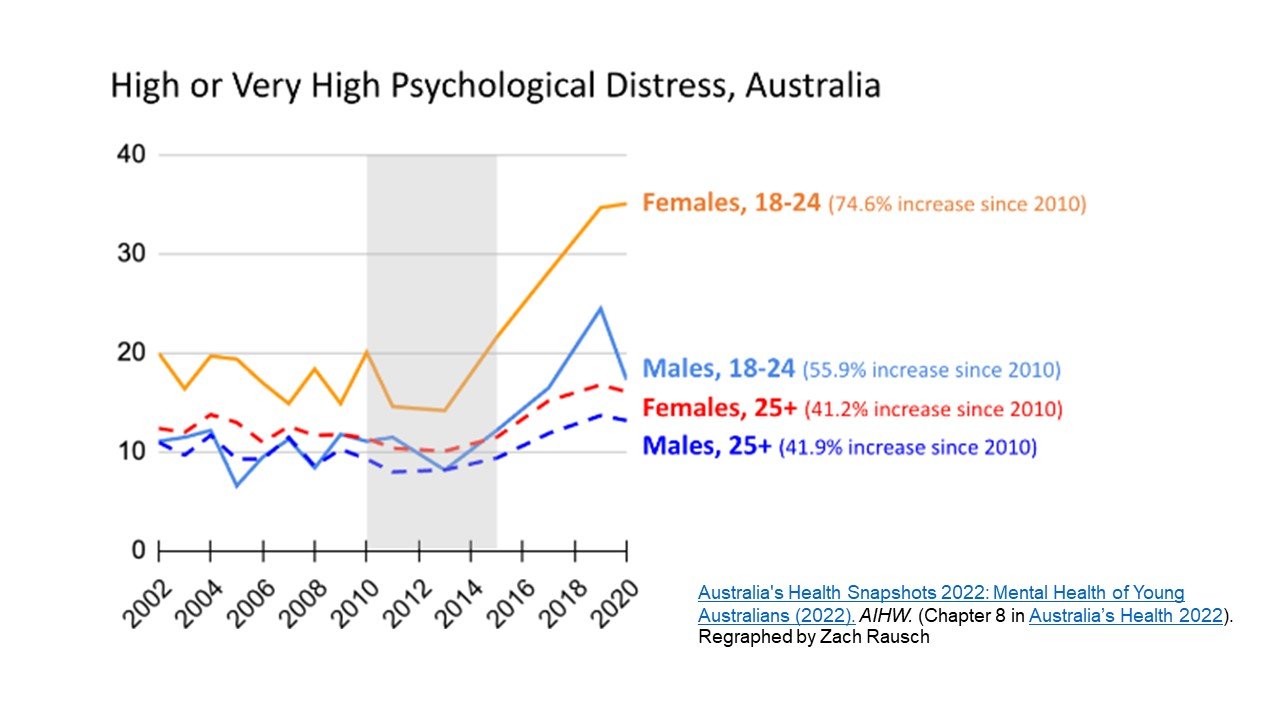Randon Musing
I talk frequently about the mental health crisis that our country is facing. The reception to what I am saying changes with my audience. Young people, parents of young people, and those that work with young people see it. They want answers, and they want help finding a solution.
Older audiences, and those without strong ties to young adults, listen to what I am saying, but as a group are far more dismissive, and much more likely to minimize the problem. They tell me that it’s always been like this or lay blame on the ‘obvious’ effects of the covid lock downs, and things will go back to normal soon.
Of course, there are outliers in both groups but there is a dived.
Below is the data from the Key Substance Use and Mental Health Indicators in the United States: Results from the 2020 National Survey on Drug Use and Health (Richesson & Hoeing 2020).
I chose this data, and subsequent data, as it looks at major Deprsiive eposides. I did this, and ignored other rescearch that looked at anxiety or related conditions diliberatly. I did this as the criteria for major depressive episode are much clearer to define, and are easier to explain and understand than episodes of anxiety. The term anxiety, though a clinical term, is often used interchangeably in the press with stress, worry or nerveousness. This complicated my ability to gather data from diffirent countries and can confuse our understanding of a pressing clinical issue.
Here the data clearly shows that something is happening to young adults aged 18 to 25, and its been getting dramatically worse since around 2012. Though other cohorts are seeing a small up tick in depressive episodes since 2018, they have been relatively stable compared to group that will be working at our camps.
So lets dig a little deeper
This next slide compiled from several sources shows major depressive episodes for teens by Gender. This slide is interesting as it shows the data for 2020 through 2022. As you can see covid was just a blip. There was an uptick in major depressive episodes in 2020, as we might expect, but it went down in 2021 and 2022. Sadly the upward trend continues. We can also see here how much more prevalent depression is among girls. The data shows this has been a long term trend, but the rate of depression among girls is accelerating far faster than among boys. Again, something appears to happen in 2012/13 that causes this dramatic rise.
Our third slide shows the problem with Teen depression by Race, and the fourth by percentage above or below the poverty line.
Health care outcomes by poverty are a fascinating topic, and one I am sure we will dig into in another post. Overtime they have shown the opposite of what we might intuitively believe. That living in poverty is crippling to your mental health. Yet teens living in poverty have better mental health outcomes than extremely affluent ones. You can examine the work of Suniya Luthar for more detail. Again there is an interesting trend in this Data, the rate of major depressive episodes show a rapid acceleration for all cohorts starting around 2012.
So what’s causing this accelerating decline in the mental health of the people most likely to be applying to work at our camps. The most common answer is the Sandy Hook and other school shooting. Sandy Hook happened in December of 2012, and common wisdom says that this increased school security, the number of active shooter drills, and therefore the anxiety and depression of teens.
A cursory glance would suggest this is correct, but the statistical correlation is actually pretty weak.
Whats more here is the data for New Zealand where School shooting simply dont happen.
Similar For Australia. (Also no school shootings)
So what happened in 2012?
Meta purchased Instagram.
I dont do statstics well. But I am told that the corrolation here has a stronger r Number than the corollation between lead pipes and a reduction in IQ.







